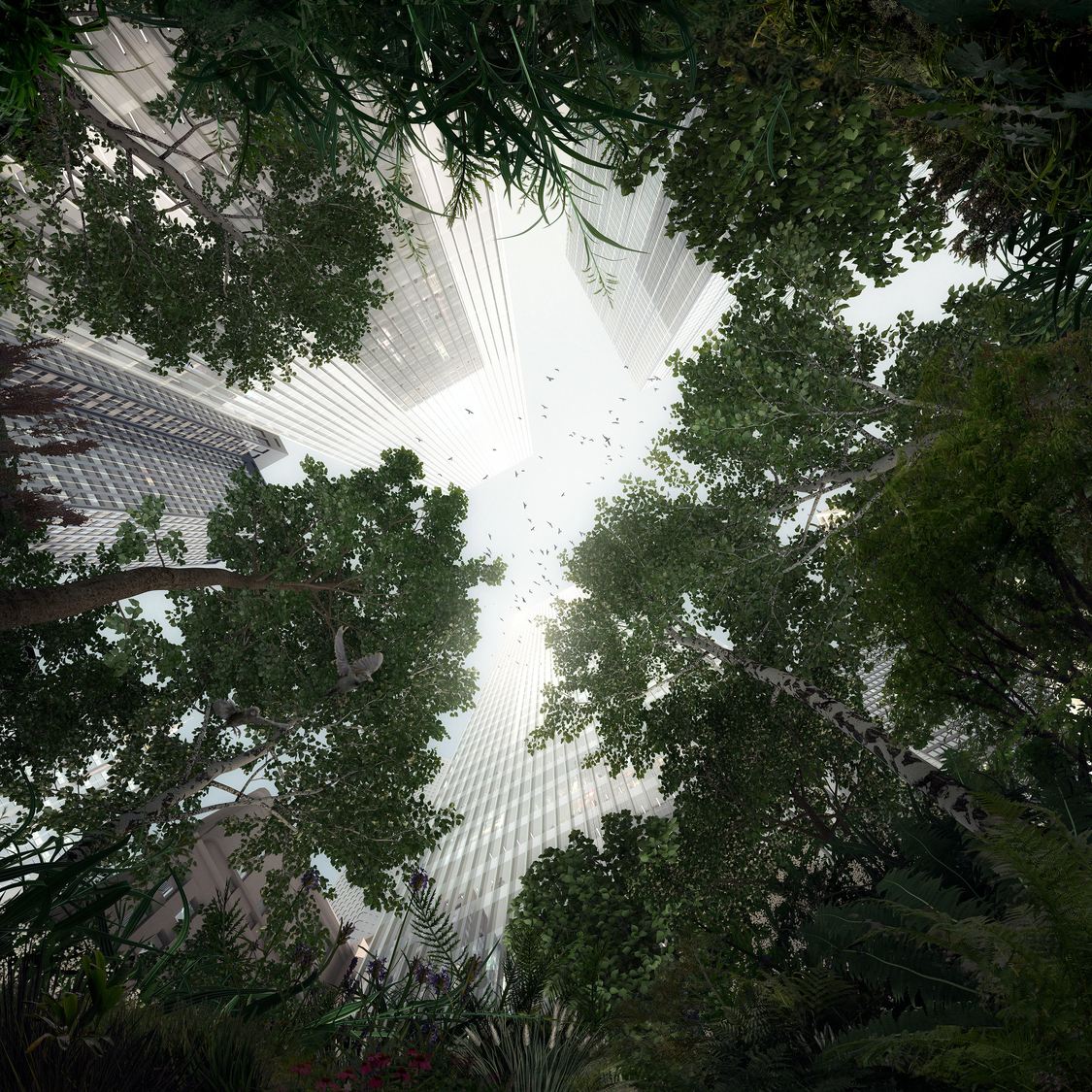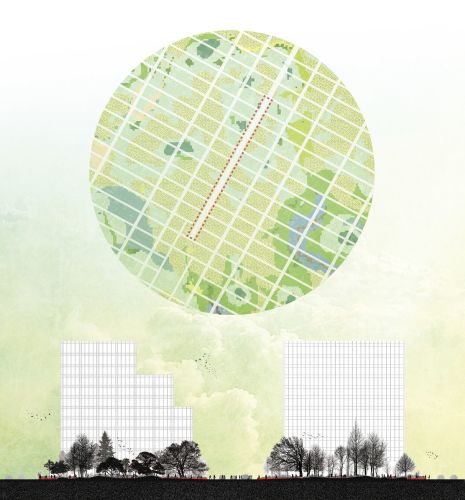Wildly in need
Rethinking urban habitat in the age of climate emergency.
By Chris Kelly with illustration by Sharon Wright
Cities are amazing human-made ecosystems that drive technological progress, equality of opportunity and economic growth. But they also consume resources and encroach on natural habitat, displacing wildlife and reducing native flora.
Where habitat is retained in urban areas, its ecological value is at risk from fragmentation, pollution and introduced species. Some species thrive, others don’t.
Then there’s the rapid mass destruction caused by climate catastrophe. Australia’s current bushfire season has so far destroyed an estimated one-billion animals and 18.6 million hectares of bush habitat.
The unprecedented bushfires have thrust biodiversity loss into worldwide public consciousness. They also underline a need to rethink urban ecology, and come up with solutions to house and care for displaced people and wildlife.
Can our urban areas become safe havens for wildlife refugees suffering habitat loss?

NEW PRIORITIES FOR PARKLANDS
This was front of mind in a design studio co-delivered by Hassell designers at this year’s UNSW Sydney Urban Lab, led by US-based Australian landscape architect Professor Richard Weller.
Could we use city parklands to house endangered animal species? And how would we create an environment suitable for their incubation and rehabilitation?
The lab looked at a local opportunity to answer these questions: Sydney’s Centennial Parklands. The interdisciplinary students designed research and veterinary labs for endangered species in restored habitat areas located within the parklands – Sydney’s largest urban green space network comprising Centennial Park, Moore Park and Queens Park with interstitial urban and residential green spaces between.
This design studio formed part of a larger research piece on vulnerable biological hotspots – or critical ecosystems around the world – including the ‘Forests of East Australia’ that Sydney sits within.
“This is not about gawking at animals and human pleasure. This is about incubating species because if we don’t, we could lose them.”
Professor Richard Weller, University of Pennsylvania

SEEING OUR CITIES AS BIODIVERSITY HOTSPOTS
Viewing cities as biodiversity hotspots, places “both biologically rich but deeply threatened”, may seem counter-intuitive. But there’s considerable opportunity for better integration and cohabitation of species.
Certain fauna species are better at surviving – even thriving – in urban environments. The Australian white ibis – known affectionately as the ‘bin chicken’ – is a visible example in Sydney. Ibises suffered habitat loss in the Macquarie Marshes and inland waterways of New South Wales and Queensland. They now live in cities, drawn by the constant supply of edible waste.
Part of the ibis’ adaptability comes from its physical size. They can travel large distances and stand ground when faced with urban predators. But adaptability is not the norm for smaller, more vulnerable, and less capable species. These species need our help to survive.
It’s estimated that only 10% of bird species and 25% of plant species can adapt to urbanisation without assistance.
Source: Proceedings of the Royal Society B
Two of Australia’s most iconic species fall within this category. The platypus and the koala both have very specific habitat and resource requirements, making them inherently vulnerable. This is compounded by ongoing drought of waterways, forests cleared for agriculture and logging, and urban sprawl.
The 2019-20 fires in Australia have destroyed up to 30% of the koala population and their habitat. And there’s an “urgent need for a national risk assessment for the platypus to assess its conservation status (…) in order to minimise any risk of extinction,” says Dr Gilad Bino from the UNSW Centre for Ecosystem Science.

GREEN SPACE IS NOT ENOUGH
Designers must develop deeper understanding of native habitats, their ecosystems, and their function in both wild and urban places. We need this to find new ways to support – and save – threatened species, and help them adapt to reconstructed natural environments.
Ecosystems are complex, and we should avoid oversimplified distinctions of ‘urban’ versus ‘natural’.
We must expand our expectations of both concepts to develop cities that support the cohabitation of humans and other species.
‘Green space’ is not enough. In urban planning, green space is typically an open space provision for human recreational needs. It’s not necessarily perceived as an ecological resource capable of supporting diverse biology across the city. As such, many cities carry ‘extinction debts’, or local species’ populations that are predicted to become extinct.
For urban areas to become habitat, they must have healthy ecosystems to support biodiversity. We need to understand how different species function together in an ecosystem, and this requires collaboration. It will take a cross-disciplinary approach to uncover places of potential – with engagement from ecologists, planners, engineers, urban designers, landscape architects, and others.
Like natural ecosystems, cities contain ecosystem components – but they are entirely human-constructed. We can understand and use these components in order to unlock our cities’ latent and suppressed biodiversity and enable it to thrive. We must look at the areas in-between natural habitats – at the overlap and intersections of city systems, infrastructure and diverse land uses.
We must find opportunities to address habitat fragmentation through better connection of natural systems, and alternative movement networks for different groups of species. This could include subterranean networks, roads, bridges, parks, building facades and roofs. All offer opportunities if they’re considered with both human and animal inhabitants in mind.

COHABITATION THROUGH COLLABORATION
Studios like the UNSW Sydney Urban Lab enable meaningful cross-disciplinary engagement on issues, and open them up to the future professionals who will shape our built environment. The student proposals present budding ideas, ripe for serious consideration and realistic applications. We can build hidden and better connected habitat networks, and create enclaves to incubate species and educate the public. It starts with a more balanced perspective that makes room for both people and wildlife.
We need to recognise the obstacles and failings in our current city planning and regulations. We must advocate for greater species cohabitation and biodiversity in urban areas. This requires better strategic planning in federal and state politics, and alignment with local council planning and land management, where comprehensive opportunity mapping is undertaken. And there’s a need for strong community engagement, for widespread awareness of urban habitat issues and the need to ‘make space’ for cohabitation.
We’re witnessing disasters daily. Given the future outlook, our cities must become safe havens not only for ourselves, but for many species.





